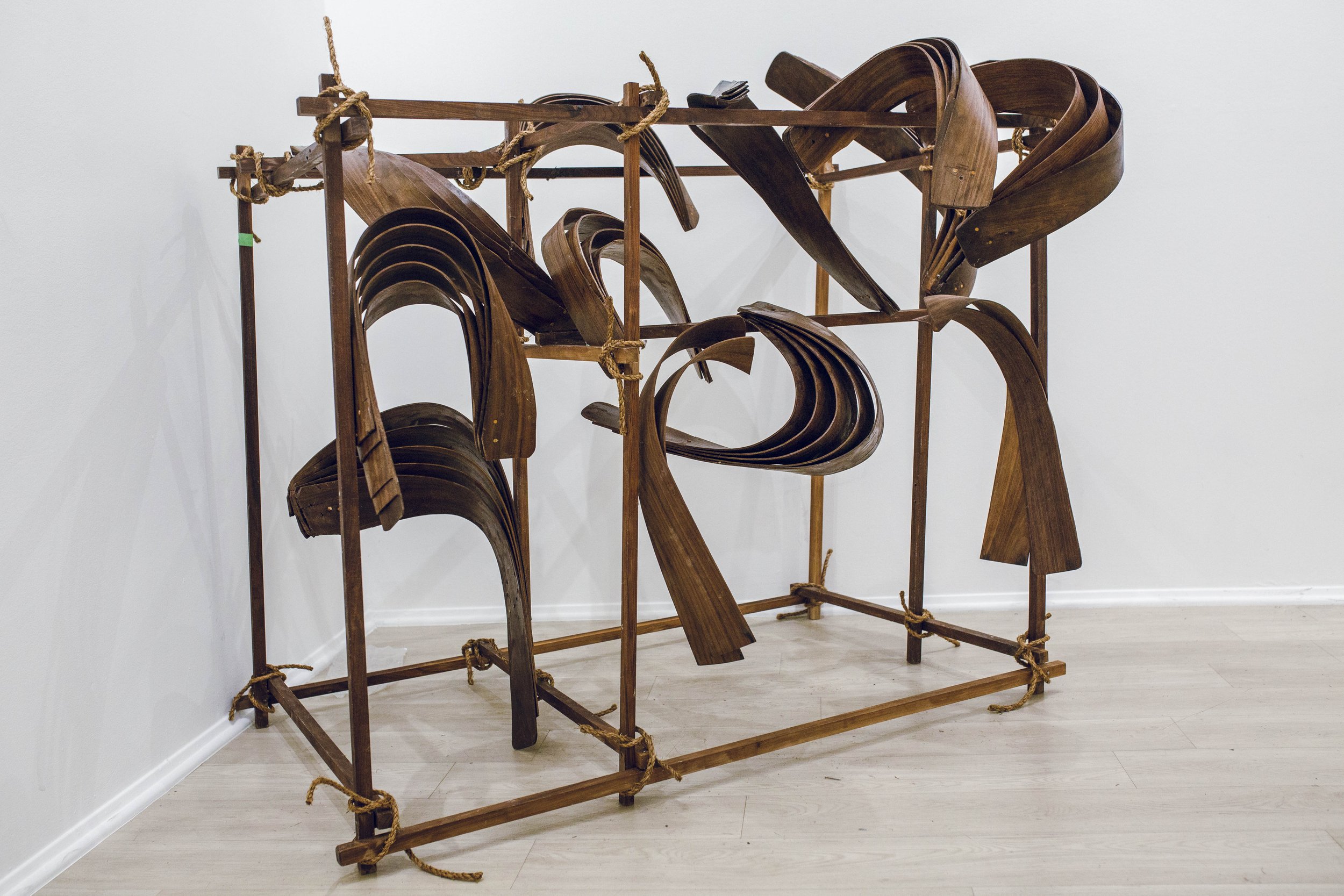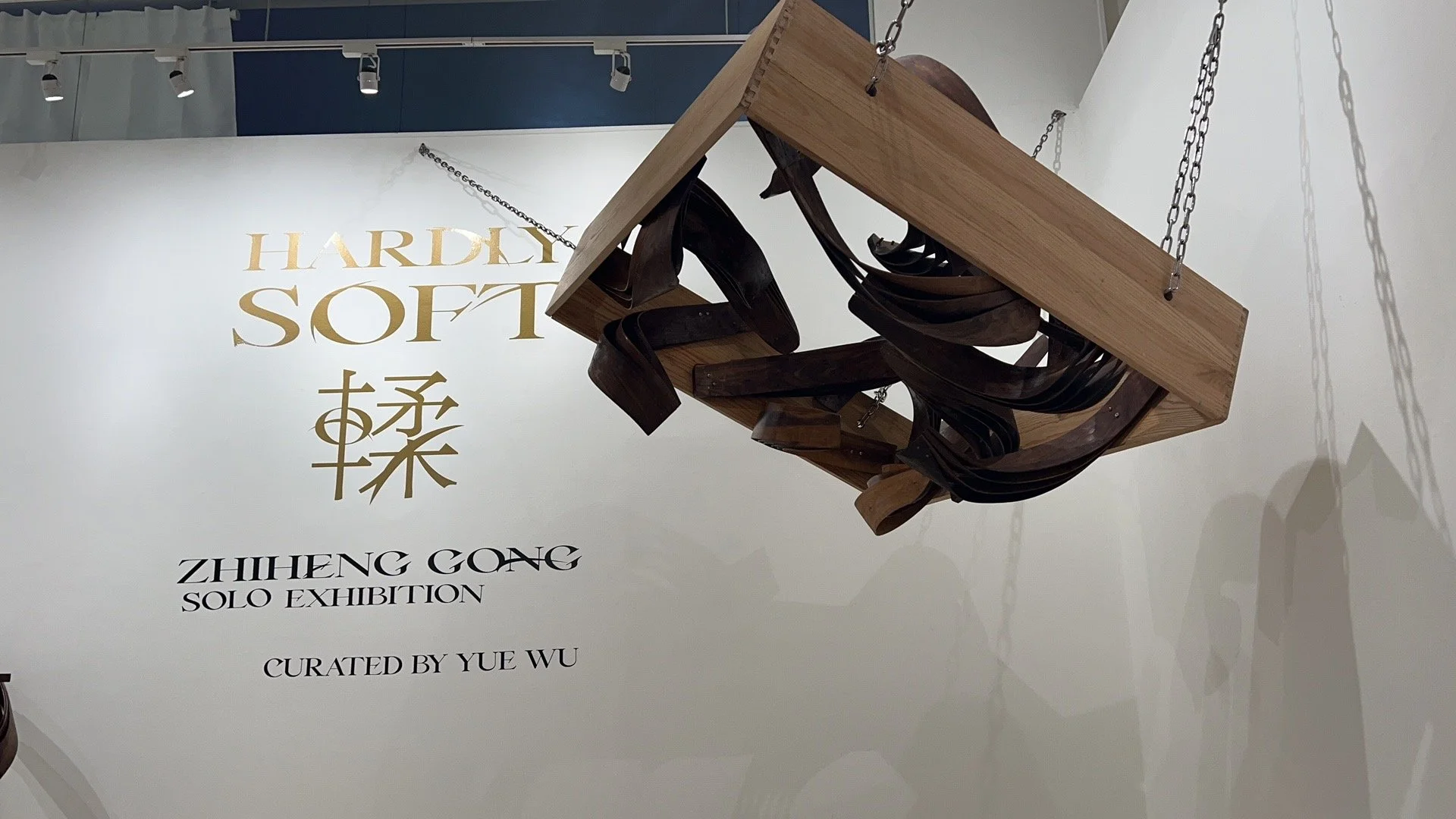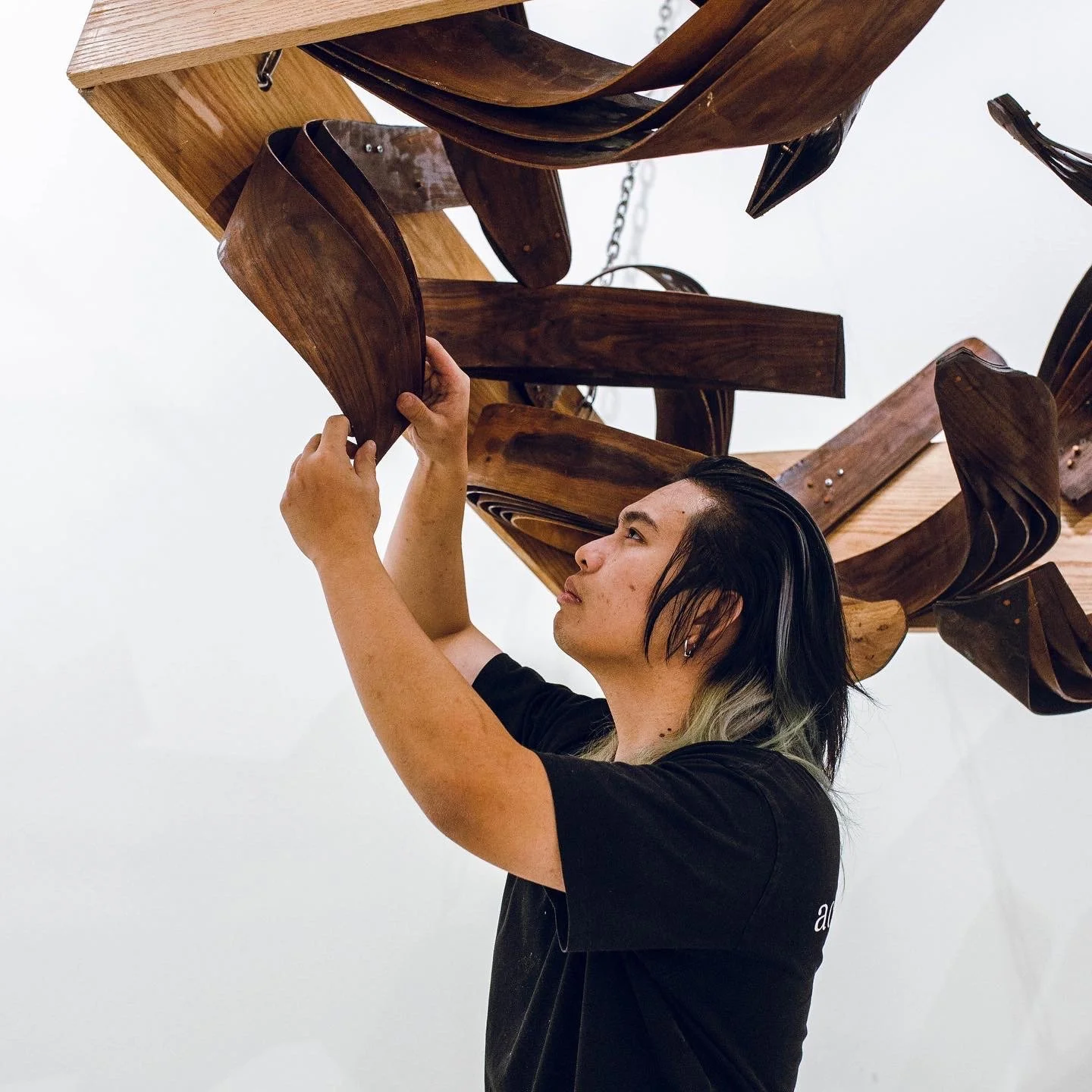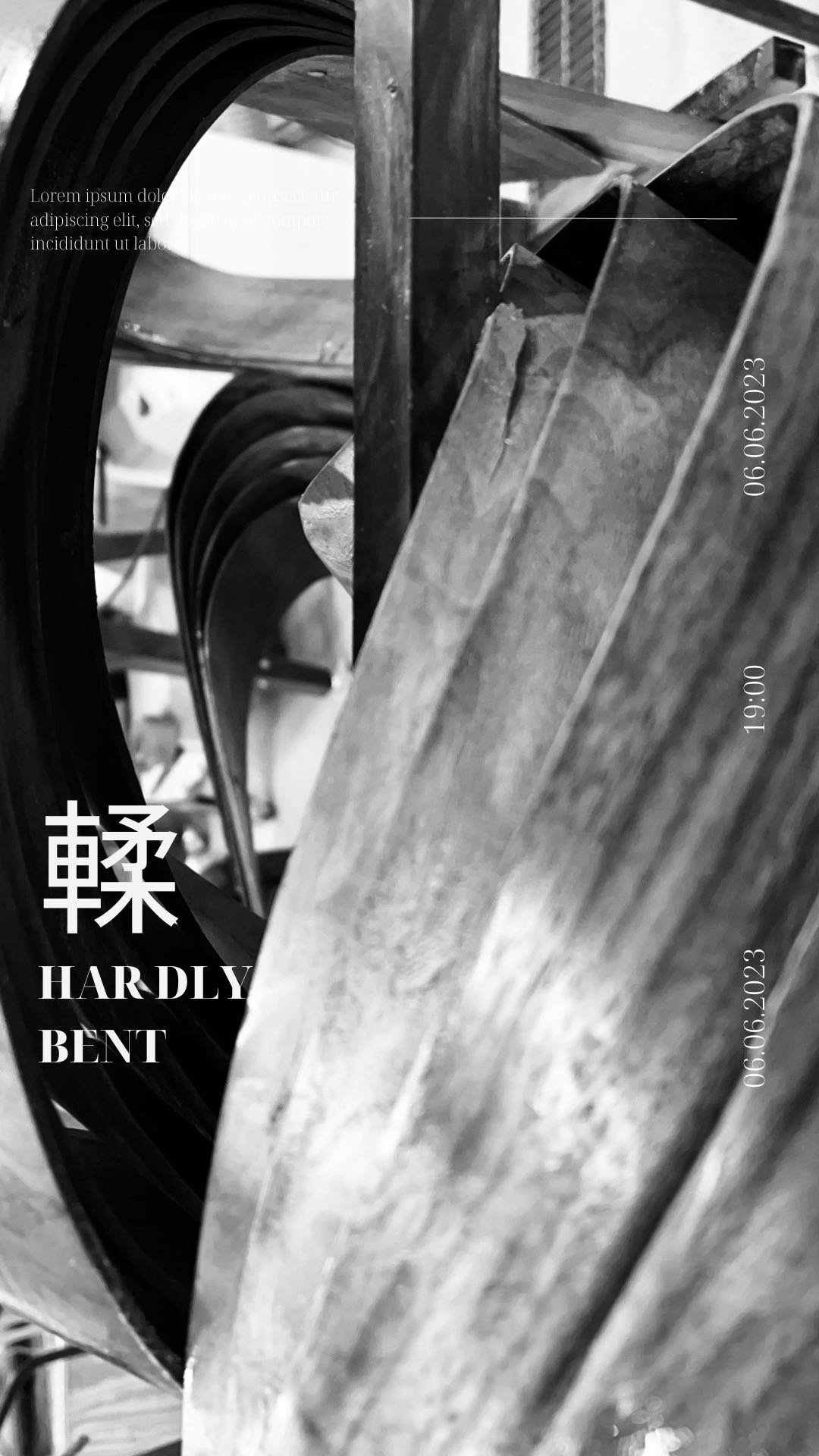Wood Whisperer – Artist Zhiheng “Leo” Gong
World-renowned spatial and 3D design artist Zhiheng "Leo" Gong, best known for their work as an installation artist, launched his first solo exhibition entitled "Hardly Soft," at the illustrious Yiwei Gallery in Venice Beach, CA in November after having his work featured in New York, Los Angeles, and Italy.
Featuring a unique collection of sculptures crafted from steam-bent wood, Zhiheng's exhibition "Hardly Soft" is a milestone in Gong's artistic career and a profound exploration of resilience and adaptability mirrored in the artworks' material and the artist's narratives. At the heart of "Hardly Soft" lies the art of steam-bending wood, a meticulous technique that requires precision, patience, and the courage to risk scalding. The wood is slowly softened by steam only to be shaped into complex forms, a metaphor of the artist's transformative journey.
As a diasporic artist from Jinhua City, China finding a second home in Detroit's diverse and dynamic landscape, the sculptures reflect the complexities of assimilation, the strength found in flexibility, and the beauty of enduring shape. Each piece of installation in "Hardly Soft" is also a testament to the harmony between natural form and human influence, between the organic and the cultivated. Through the interplay of curves and lines, the artist invites viewers to contemplate the delicate balance of maintaining one's essence while yielding to the forces of change.
Having a BFA from the University of Iowa in 3D Design, and an MFA in 4D Design from the Cranbrook Academy of Art, Leo now spends his time not only teaching other students at the College for Creative Studies in Detroit, MI, but is also working on his art textbook that will be used at the colligate level while somehow still finding time to work on his next spatial masterpiece.
RAINE: What was the spark of inspiration that led you to pursue a career crafting art?
ZHIHENG “LEO” GONG: During my undergraduate studies, I started to engage with various physical design projects and have consistently persisted. Transforming inspiration into tangible creations is a fascinating endeavor, akin to actively bridging a virtual world in my mind with the real world.
RAINE: In your mind what advantages does pursuing a career in 3D art have over the equivalent in the two-dimensional space?
GONG: In my opinion, three-dimensional artworks are more closely related to people's lives because we constantly interact with them. This is very helpful for the audience to understand and experience the artwork, and they can appreciate the work from multiple perspectives, providing a richer experience for the artwork itself.
RAINE: What is it about wood specifically that makes it an effective material for showcasing sculptures and artwork in your field?
GONG: Wood is a vibrant material with life. Due to the variety of species, it possesses great flexibility. For different types of projects, I can use different species of wood to better express my ideas and emotions.
RAINE: Excluding the potential for scolding, what other unique challenges are presented throughout the steam-bending wood process?
GONG: I believe the key factor lies in being familiar with the wood being used. Different wood species and thicknesses can be influenced by the steaming time. Too short a time may result in insufficient softening of the wood lignin, making it difficult to achieve the desired bending for the ideal shape. Conversely, if the time is too long, it may lead to the lignin breaking.
RAINE: If someone wanted to learn the basics of the process or try it for themselves, what is the most accessible way for them to gain this knowledge?
GONG: There are many related tutorials on YouTube, which is the easiest channel to access. However, whether it's online or in-school learning, practice is the key to success.
RAINE: Your latest exhibition is described as “a profound expression of resilience and adaptability mirrored in the artwork's materials.” What forms of resilience are mirrored in both your creative career and artistic output?
GONG: My solo exhibition, "Hardly Soft," expresses the viewpoint of life's diverse paths through the presentation of three differently curved pieces of wood. No one's life can be without troubles, but in the process of being suppressed and changed, we have the choice to either break down or undergo a rebirth and become a better version of ourselves. This dilemma is something we all have to face throughout our lives.
RAINE: How does the tangibility of your work in its final form impact the potential for audience interpretation?
GONG: In my view, the final form of a work's content is variable and depends on what the author intends to express. However, the bending plasticity of steam-bent wood creates a strong contrast and fluidity. By altering people's inherent perception of hardwood, it enhances the energy of the work, giving static objects a sense of constant movement.
RAINE: You have parlayed your successful university career passing on your skills and knowledge to the next generation in a teaching role. What is it like to be on both sides of the teacher/student divide?
GONG: This is a fascinating shift in perspective, transitioning suddenly from the passive role of a student to the active role of a teacher who selects course content. It not only adds a sense of responsibility but also helps me organize the knowledge I have acquired throughout my learning journey. Ensuring that what is taught is both useful and effective for students also prompts me to return to the student's standpoint to learn new content, thereby enhancing my teaching skills.
RAINE: When writing and teaching in an academic context, what is the secret to simultaneously engaging students whilst also imparting knowledge and skills that will help them in their further careers?
GONG: There is no one-size-fits-all approach. However, for the art field, time will not let you down. You can stay in the studio and continue to produce and think. Even getting your hands dirty without thinking will help the whole career a lot.
Photos provided by AGPR







